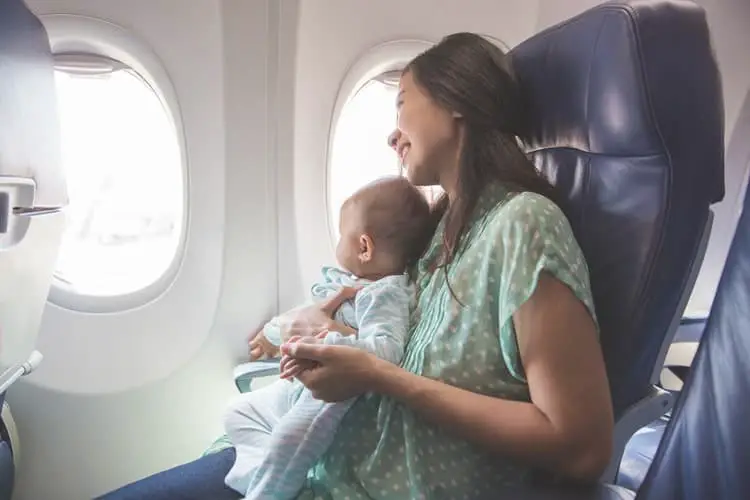Traveling is a rewarding experience for any family, but getting there and back can be a daunting experience for new parents.
Flying on your own is one thing, but flying with a baby is a whole different ordeal. While most of the basics remain the same—make sure you don’t miss your flight, pack everything you need, bring identification—there are some key differences. If you’re prepared, you can avoid a ton of headaches before, during, and after your flight.
Before your flight
Packing
Flying with an infant means you need to do more work beforehand than if you were flying solo. One of the best ideas is to make sure you’re packed well beforehand and leave earlier than you usually do.
Before you start packing, you need to calculate how long your flight and vacation are. That will be the biggest factor when it comes to deciding how much to pack. If you have a shorter flight you’ll only need a handful of diapers and toys, but if you have a much longer flight you’ll have to pack accordingly. No matter the length of your flight, you should pack more than you do. There’s always a chance you could get stuck in a layover or have a transferring flight get canceled and stuck for hours, leaving you without the right supplies.
When it comes to travel accessories, there are a lot of options out there for carrying your baby. There are strollers, carrying packs, car seats, and more. Depending on where you are going for your trip, each one has its benefits. Keep in mind, some airlines allow the smaller, lighter strollers to go on the planes but want larger strollers to be gate-checked.
Almost all airlines do not charge you for bringing the stroller or car seat with you on your flight. It’s counted as an addition to your regular free bag that you’re allowed. You will need to carry your baby through security and the metal detector, so keep that in mind when it comes to your luggage and carrying plans.
Buying your tickets
Any baby under the age of two gets to fly for free. All you need to do is mark this when you’re buying a ticket and give them a name and date of birth.
You’ll also have to make the decision of whether you want to have your infant sit in your lap during the flight or get them a seat. According to the Federal Aviation Administration, the safest way for your child to fly is in a child safety restraint system or device instead of sitting on your lap.
If you end up buying your infant a seat, you’re allowed to bring a safety seat on board. Otherwise, you’ll have to leave your baby in your lap if there isn’t an empty seat next to you. If you want to hope that there is an empty seat next to you, you can use a child safety restraint to keep them safe.
At the Airport
Some airlines want you to get a boarding pass for your baby, but for most of them just yours will suffice. The rules will also change airline to airline whether you need to bring identification for your baby. For instance, Southwest Airlines says you need to bring identification for your child, whereas Delta does not officially require it. American Airlines doesn’t have an official policy but their website states you “may be required to present proof of age” for children under 18.
The official TSA rules say: “TSA does not require children under 18 to provide identification when traveling with a companion within the United States.”
The best thing you can do is to bring identification so no matter what happens you’re ready and prepared. You don’t want to miss your flight simply because one employee asks for it even if it’s not official company policy.
Most airports also have skycaps you can use to help you with your luggage and depending on how many bags you have it can be worth the tip you give them.
When you get to the TSA checkpoint, you’ll need to collapse your stroller and fit it through the X-ray machine if it fits. If it doesn’t fit, a TSA employee will have to manually inspect it.
On the plane
Preparing for your flight and getting through TSA is only a small part of the journey that is flying with an infant. You should be ready for your child to possibly be upset during the flight. They’re in a strange place, stuck in a small space with a lot of strange faces, are outside their usual routine, and the pressure from the cabin can add to the stress they’re feeling.
When it comes to the air pressure change during flight, a tip is to let your child suck on something to keep their ears feeling better. A pacifier or other toy they like to use will work best.










